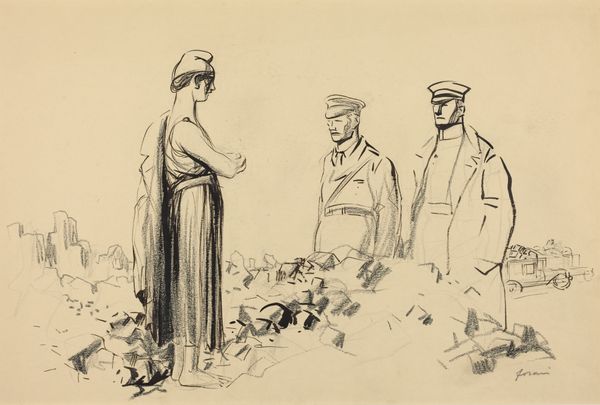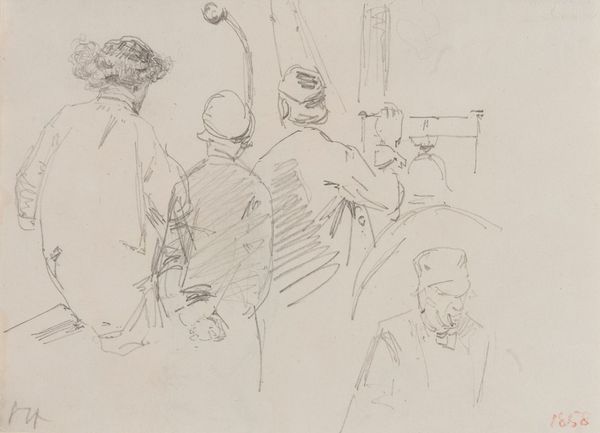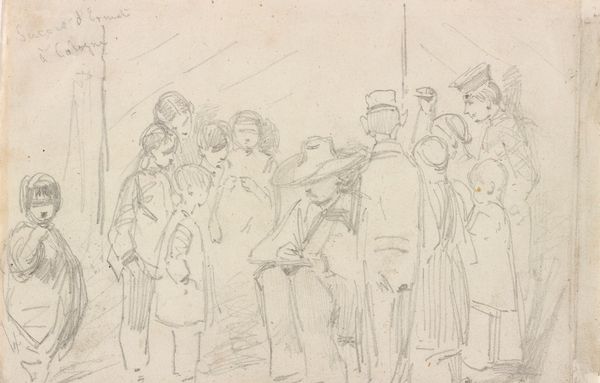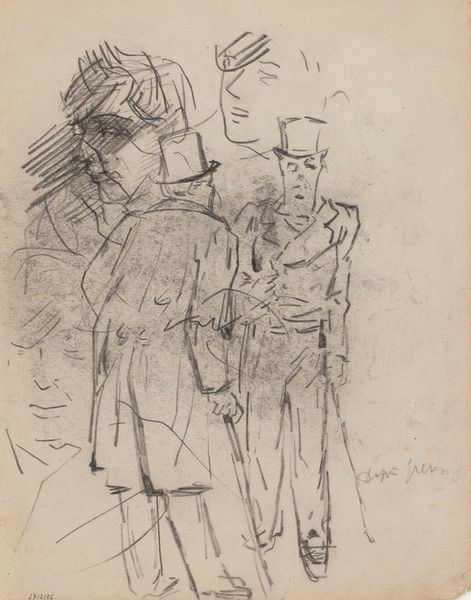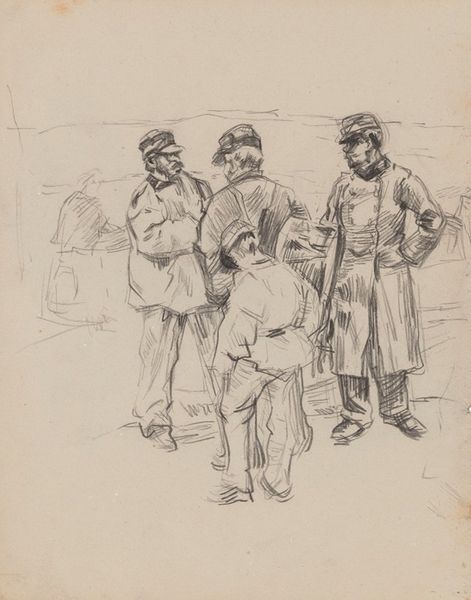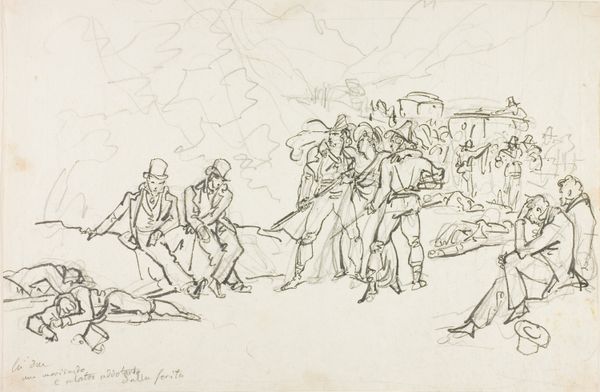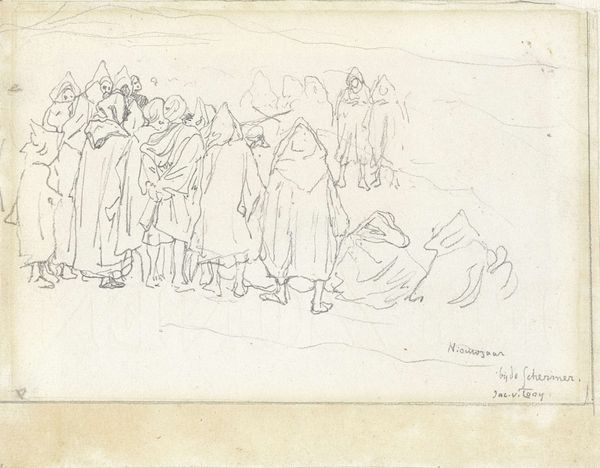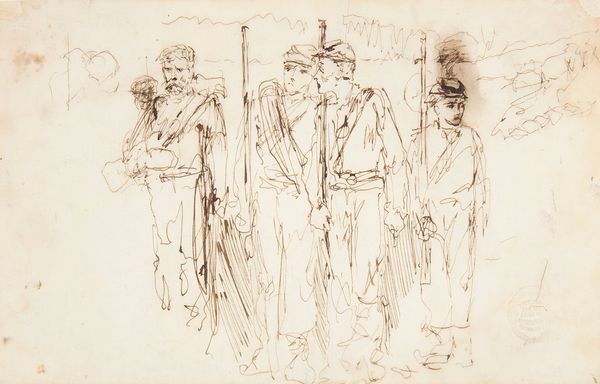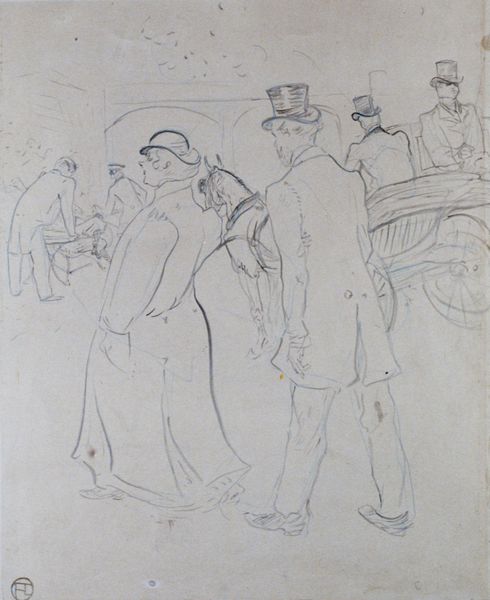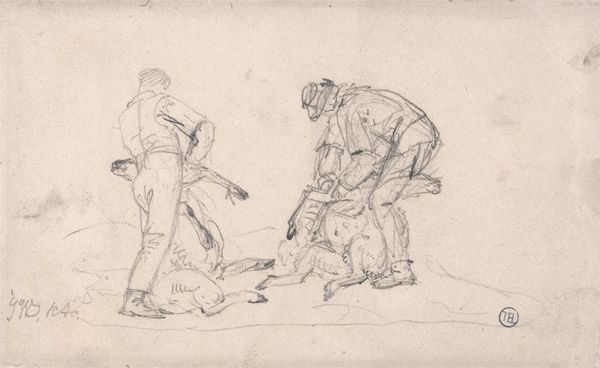
drawing, pencil
#
drawing
#
pencil sketch
#
landscape
#
pencil
#
realism
Copyright: Public Domain: Artvee
James McNeill Whistler sketched "Le Rhin" using graphite on paper, likely en plein air. The immediate impression is one of lightness, which speaks to the portability of the medium itself. The artist would have been unburdened by the constraints of a studio, free to capture a fleeting moment. See how the rapid, confident strokes evoke a sense of immediacy, capturing the atmosphere and human presence with remarkable economy. The figures and their belongings are rendered with a quick, suggestive touch, a testament to Whistler’s skill in capturing form with minimal means. Consider, too, the social context. Sketches like these were not intended as finished works, but rather as studies, preparatory to more elaborate compositions. Whistler was deeply invested in printmaking, a mode of production that allowed for the wide distribution of images. Sketches such as this would have been the foundation for a more involved artistic process. So, as you look at "Le Rhin," consider the relationship between material, process, and social context. Whistler’s choice of graphite on paper, combined with his distinctive technique, imbued the artwork with a sense of spontaneity and modern life.
Comments
No comments
Be the first to comment and join the conversation on the ultimate creative platform.
